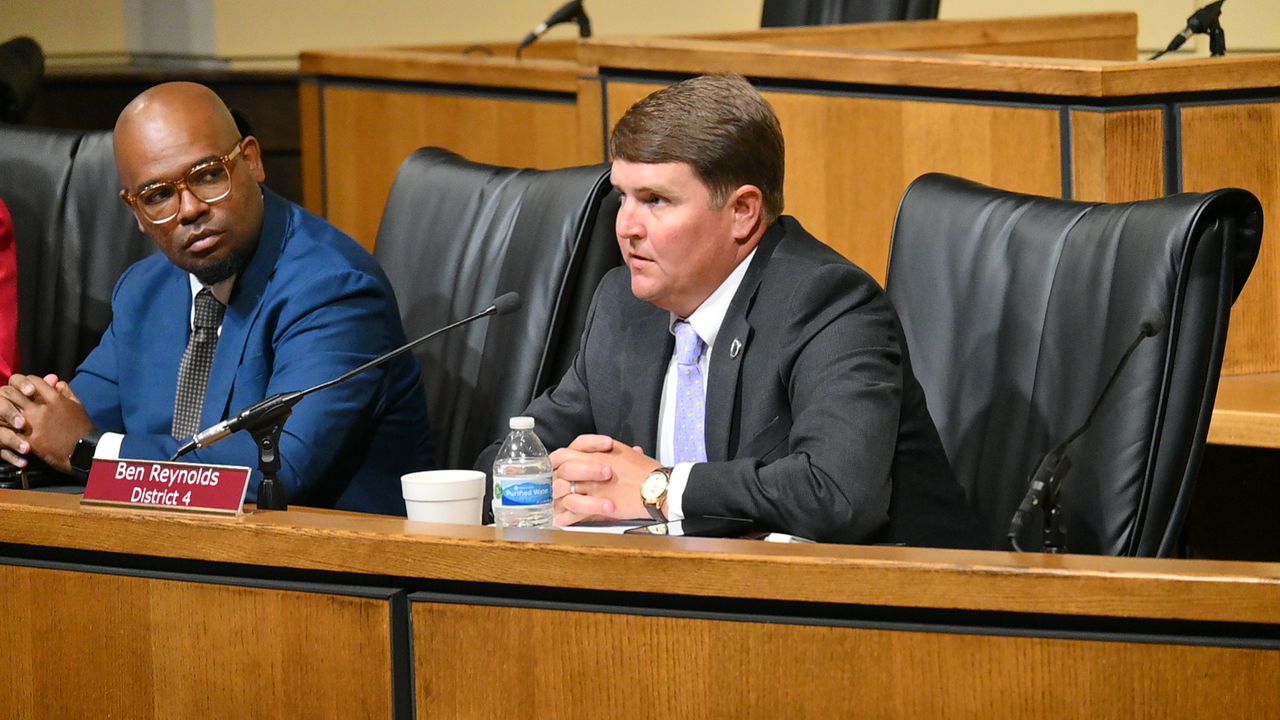Alabama county becomes eligible for grant for first time in seven years due to rise in homelessness
Mobile County is getting $148,416 in a pot of federal money that it hasn’t gotten since 2016.
This isn’t a good thing. The grant is through the U.S. Department of Housing and Urban Development and is aimed at a program focused on preventing homelessness. It is allocated by the federal agency each year based on a funding formula that takes into account an annual homelessness population count.
It is a population count that is on the rise for Mobile County.
“It’s nice to have funding,” said Commissioner Merceria Ludgood. “But the basis (for it) is really discouraging.”
The three-member commission OK’d the grant award from HUD on Monday. It requires a 100% in-kind or cash match from county taxpayers.
Gordon Baurer, grants administrator for Mobile County, said a “significant change” in the region’s homeless population count was a contributing factor as to why HUD allocated money to Mobile County through its Emergency Solutions Grant (ESG) program.
The county’s eligibility is based on an annual Point in Time (PIT) count overseen by Mobile-based Housing First, Inc., which serves as the lead agency administering the annual homelessness count in Mobile and Baldwin counties.
According to the most recent PIT, occurring in January, there were 670 sheltered and unsheltered people in the two coastal counties, a figure that is up 6% from 2022 and is slightly more than the historic 18-year average for the two counties.
The 670 number is the highest PIT recorded in Mobile and Baldwin counties by Housing First in 11 years. In 2011, the area’s homelessness count was at 718. That count came one year after an 18-year high and during the height of the Great Recession, when Housing First counted 883.
Derek Boulware, CEO with Housing First Inc., said the annual PIT is merely a “snapshot” figure at the time the count is occurring.
“It’s just a snapshot and, by no means, paints a complete picture,” he said. “People are seeing homelessness in different areas than in previous years.”
Of the eight Alabama regions that undergo a PIT count each year, Mobile and Baldwin counties ranks second behind only Birmingham for the highest homelessness in the state. Th Huntsville/North Alabama region slightly trails the two coastal counties.
Mobile City Councilman Ben Reynolds speaks during the Mobile City Council meeting on Tuesday, May 23, 2023, at Government Plaza in Mobile, Ala. Seated next to him is Mobile City Councilman Cory Penn. (John Sharp/[email protected]).
Mobile City Councilman Ben Reynolds said he was not surprised to learn that the numbers are increasing. He cited growing concerns about homelessness encampments in and around the Tillman’s Corner area of Mobile, which drew attention from law enforcement about one year ago. Volunteers last August cleaned up homeless encampment at a Lowe’s store last August, only to see trash and at least two homeless people return a short time later, according to reports.
“We’re getting more folks,” Reynolds said. “I don’t know why it’s more attractive to be in Tillman’s Corner other than there are large wooded areas where people can be left alone. I hope police and the Sheriff’s Department and any other government agency continues to do their part combatting drug use and panhandling and combatting the folks who are sleeping on a business owner’s front steps or their porches.”
Reynolds, in early 2022, pitched an anti-camping ordinance that critics said would criminalize Mobile’s homeless community. The ordinance was tabled, but it helped spark a communitywide conversation about homelessness and questions about resources.
“It’s always worthwhile to have conversations, but we all have roles to play,” Reynolds said. “Those roles haven’t changed since I introduced that ordinance. The government’s job is not to provide all things to all people. It can’t. The government’s job is to push, and the non-profits are to pull.”
He added, “I want to be careful about attracting other cities and other areas to send their homeless to our area. We have to be careful of how resources are utilized.”
Ludgood said the $148,416 “is not a lot to provide services,” but added that the county will “work with the providers (who work with sheltering the homeless) to make it go as far as we can go.”
By comparison, the City of Mobile generally gets $200,000 each year from the same pot of money. According to a city spokesman, the federal funding to support homelessness has been “slightly increasing on an annual basis,” but the money to the City of Mobile has “been relatively stable for the past 5-10 years.”
At least one provider says the money the county is getting would “go a long way” with their project.
Dale Pfeiffer, president and co-founder of Mobile-based Driftwood Housing said the money could help his organization move forward in building tiny and micro-housing for the region’s homeless.
The agency is working to develop 2 acres of an 8-acre property it owns near Semmes. The goal, he said, is to build 30 small-sized houses within the 2-acre property and to start on the project by early next year.
“Our houses and micro-houses cost $7,000 to build, and our tiny houses are $2,000,” said Pfeiffer. “We have ministry teams that volunteer to build with us. Our focus is on housing the homeless and a grant (close to) $150,000 would go a long way with us.”
